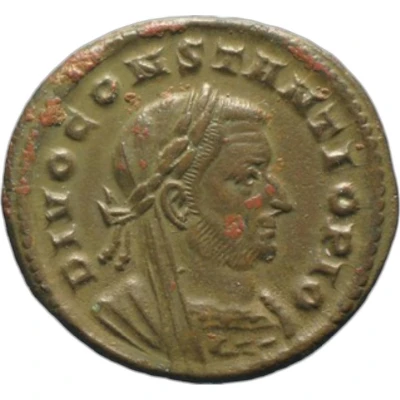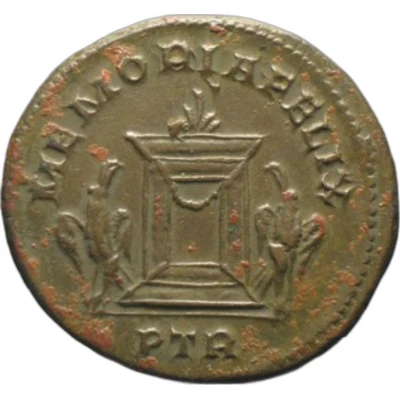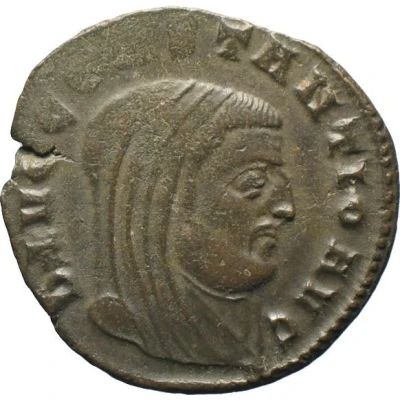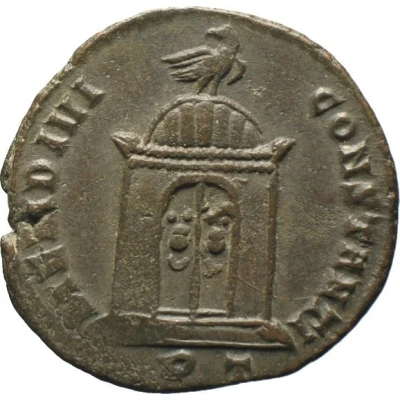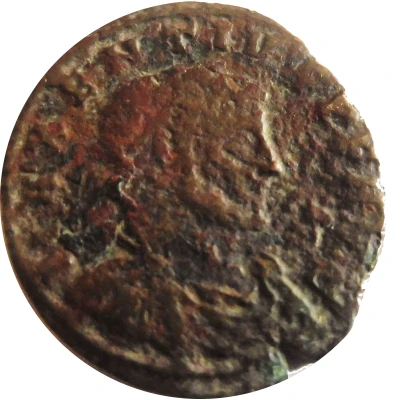
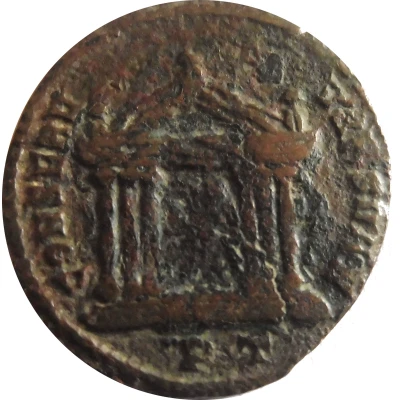

© Cycnos (CC BY-NC)
Nummus - Maxentius CONSERV VRB SVAE; Ticinum
| Bronze | 7.5 g | 38 mm |
| Issuer | Rome › Roman Empire (27 BC - 395 AD) |
|---|---|
| Emperor | Maxentius (306-312) |
| Type | Standard circulation coin |
| Years | 307-308 |
| Value | Nummus / Follis (¼) |
| Currency | Argenteus, Reform of Diocletian (AD 293/301 – 310/324) |
| Composition | Bronze |
| Weight | 7.5 g |
| Diameter | 38 mm |
| Shape | Round (irregular) |
| Technique | Hammered |
| Demonetized | Yes |
| Updated | 2024-10-05 |
| Numista | N#136899 |
|---|---|
| Rarity index | 90% |
Reverse
Hexastyle temple with triangular pediment decorated with acroteria (sometimes representing statues of Victories); inside, statue of Rome, helmeted and draped, seated on a shield on the left, head turned to the left, holding a globe in the right hand and a haste in the left.
Script: Latin
Lettering:
CONSERV VRB SVAE
PT
Comment
Other references exist with a laurel head only, or with a draped bust only for this workshop.Ticinum was a city in Cisalpine Gaul, located in present-day Pavia. It took its name from the river Ticino (Ticino) that bordered it.
Interesting fact
One interesting fact about the Nummus - Maxentius coin is that it features the image of the Roman goddess Victory (Victoria) on its reverse side, which was a common motif on Roman coins during the 4th century AD. The image of Victory was used to symbolize the Roman Empire's military prowess and its ability to conquer and dominate other nations. The Nummus - Maxentius coin is a rare and valuable example of this type of coinage, and it is highly sought after by collectors of ancient Roman coins.
